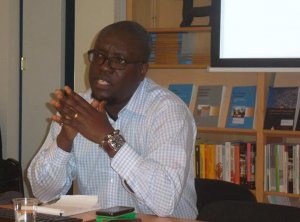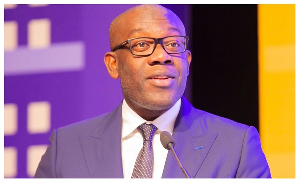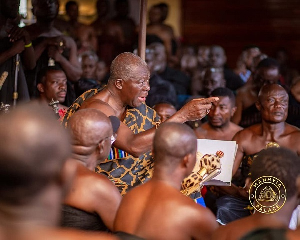Afro-China expert Dr Lloyd Amoah says the festering graduate unemployment in Ghana provides a fertile ground for radicalising young people.
He told XYZ Breakfast Show host Moro Awudu on Tuesday that just as late Sierra Leonean Warlord Foday Sankoh took advantage of a similar situation in his country to rally young people into a militant group, Ghana could suffer such a fate if the Government fails to create job avenues for the teeming unemployed youth.
According to him, frustrated unemployed graduates easily become vulnerable to radicalisation, a situation that could be exploited by people who are up to no good.
“…This is not a small matter to trifle with”, Dr Amoah warned.
His warning follows a decision by a subgroup of the Unemployed Graduates Association of Ghana (UGAG) to picket at the Education Ministry on Tuesday in demand for jobs.
According to a workshop on ‘Youth Employment and Unemployment Challenges in Africa: A Case of Ghana’ held in November 2011 by the Institute of Social, Statistical and Economic Research (ISSER), 23% of youth between the ages of 15 and 24 and 28.8% of graduates between the ages of 25 to 35 wait for two years or more before they get employed.
ISSER noted that the situation often creates unemployment particularly among the educated youth.
Research by John Yaw Amankrah, Assistant Chief Statistician and Head of Labour Statistics, Ghana Statistical Service on ‘youth unemployment in Ghana: prospects and challenges’ indicates that Ghana’s population has a youthful structure with the youth defined officially as aged 15 –24 years, constituting about one out of every four of the population.
It found that, over the past forty years, the number of the youth in the total population of Ghana has increased from 1.1 million in 1960 to 2.3 million in 1984 and to 3.5 million in 2000. The latter constitutes about 22.6 percent of the economically active population.
About 300,000 young people enter the labour market every year. The formal sector is only able to engage less than 6000 (3%), leaving about 98 per cent to survive in the informal sector or out rightly, unemployed.
General News of Tuesday, 14 January 2014
Source: radioxyzonline
Unemployed graduates vulnerable to radicalisation – Lloyd Amoah
Entertainment












